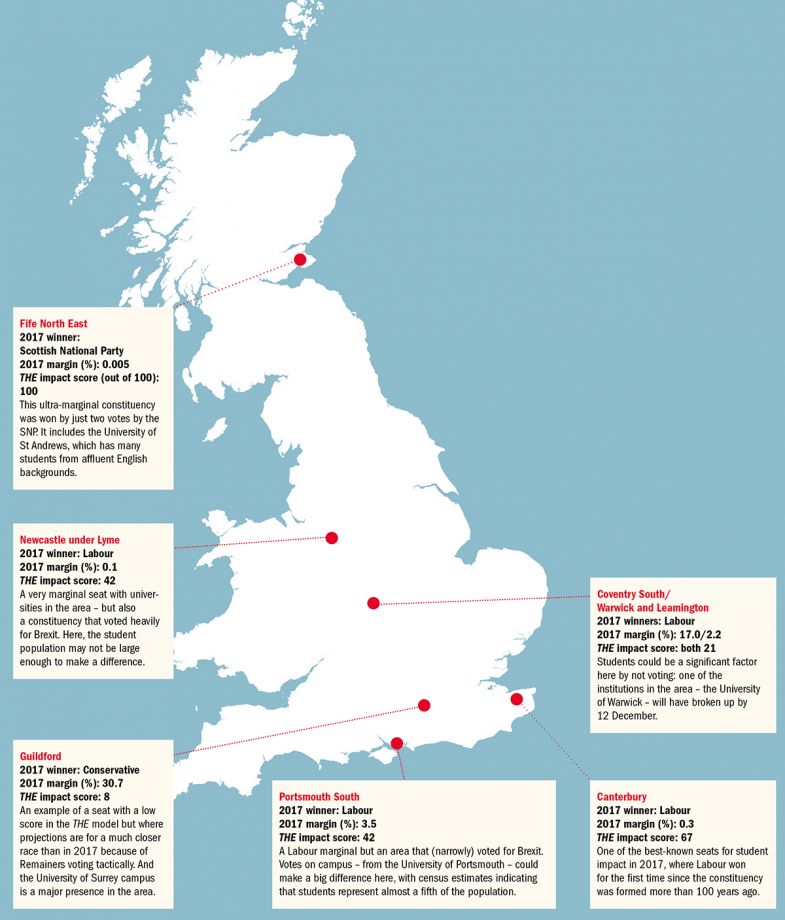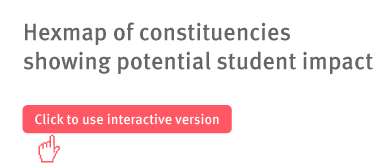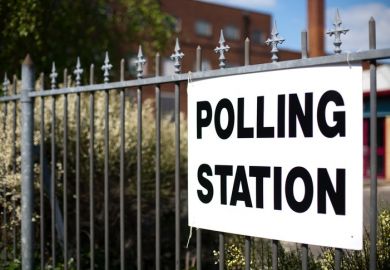Students are set to have a much bigger impact on some individual results in the UK’s imminent general election than they did two years ago because they are more likely to be on campus this time around, according to one vice-chancellor.
Although some commentators have suggested that the 12 December date was chosen because students might have left campus and gone home for Christmas by then, only a handful of institutions, such as the universities of Oxford and Cambridge, will have finished their terms.
Because of this, David Green, vice-chancellor of the University of Worcester, said he expected “many more” students to vote in their term-time constituencies compared with the last national poll in 2017, which came at the start of the summer break in early June.
For this general election, Times Higher Education has again modelled the seats where students could potentially have an impact based on the results of the previous election and census data on the constituencies with large student populations.
Poll projections

Full table of scores for potential student impact in constituencies in England, Wales and Scotland
Note: Impact scores are calculated on basis of same methodology as 2017 but with results from last general election.
The 2017 model highlighted some areas that did turn up surprising results. Notable examples included Canterbury, home to campuses for three different universities, which went to Labour for the first time ever.
If predictions that students will have a bigger impact this time come to pass, their votes – and those of university staff, too – could be crucial in a number of seats.
In recent years, surveys have indicated that students are more likely to vote for Labour than other parties, although data from YouthSight earlier this year suggested that the party’s support had halved since early 2018.
Professor Green said that more than a third of the 3 million or so people who had registered to vote since this election was declared were under 25 and likely included “hundreds of thousands of student voters”.
“Many of them were too young to vote in the 2016 [Brexit] referendum and feel a real sense of injustice that their voice has not been heard or votes counted on issues including the climate crisis and leaving the [European Union],” he said.
Nevertheless, even if students are a decisive factor in some seats, that might not affect the election’s overall result.
Nat Shaughnessy, head of data at Vote For Your Future, which has led a campaign to boost student voter registration, estimated that at most 50 out of a total of 650 seats might have a student factor – and this includes a number of seats considered marginal between parties other than the Conservatives such as Fife North East, Ceredigion in Wales and Sheffield Hallam.
simon.baker@timeshighereducation.com
Podcast: listen to THE data editor Simon Baker explain how the student impact factor works
Register to continue
Why register?
- Registration is free and only takes a moment
- Once registered, you can read 3 articles a month
- Sign up for our newsletter
Subscribe
Or subscribe for unlimited access to:
- Unlimited access to news, views, insights & reviews
- Digital editions
- Digital access to THE’s university and college rankings analysis
Already registered or a current subscriber?









